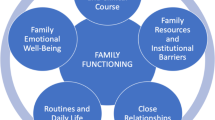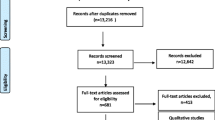Abstract
A wide variety of organizations has become involved in providing medical and social services to people living with human immunodeficiency virus/acquired immunodeficiency syndrome (HIV/AIDS). Although there is much interest among policy-makers, service providers, and clients in coordination among HIV/A IDSservice organizations, few studies have used network analytic tools to examine existing systems of HIV-related care. In an effort to fill this gap, this study used network analysis methods to describe several aspects of the interorganizational relationships among 30 HIV/A IDSservice agencies in Baltimore. Maryland. Client referrals to other organizations, client referrals from other organizations, exchange of information about shared clients, formal written linkage agreements for client referrals, and joint programs were each examined as a distinct type of network tie, with each the basis of a separate network among these 30 organizations. All of the networks except the one based on joint programs were relatively well connected, with most organizations either directly or indirectly linked. Most of the interorganizational collaboration occurred on a rather ad hoc basis for the purposes of meeting the more immediate needs presented by clients. Highly structured coordination involving substantial investment of resources and ongoing interagency activities appeared to be less common. The findings from this study also suggest that the providers in Baltimore tend to work directly with others as client needs arise rather than negotiating through “clearinghouse” types of organizations. Of the 30 HIV/A IDSservice organizations, 5 were highly central in at least four of the five different types of networks. These five organizations—each having a critical role in the continuum of care—may be considered the most central core of the HIV/A IDSservice delivery network in Baltimore. These organizations tend to be those that have been created specifically to provide HIV-related services or that specialize in HIV/A IDScare. This research can help policymakers understand how an HIV-related service delivery network may function and delineate key features of a network. In all communities, this type of assessment is critical to designing interventions to promote collaboration that are feasible within the context of existing interorganizational relationships. This type of data also has implications for informing activities to build the capacity of HIV/A IDSservice organizations.
Similar content being viewed by others
References
Sonsel GE. Case management in a community-based AIDS agency. Qual Rev Bull. 1989; 15(1):31–36.
Perrow C, Guillén MF. The A IDSDisaster: the Failure of Organizations in New York and the Nation New Haven, CT: Yale University Press; 1990.
Mechanic D, Aiken LH Lessons from the past: responding to the AIDS crisis. Health Aff. 1989;8(3):16–32.
Fleishman JA, Piette JD, Mor V. Organizational response to AIDS. Eval Prog Plann. 1990;13(1):31–38.
Mulford CL, Rogers DL. Definitions and models. In: Rogers DL, Whetten DA, Associates, eds. Interorganizational Coordination. Ames, IA: Iowa State University Press; 1982:9–31.
Doreian P, Woodard KL. Fixed list versus snowball selection of social networks. Soc Sci Res. 1992;21:216–233.
Boje DM, Whetten DA. Effects of organizational strategies and contextual constraints on centrality and attributions of influence in interorganizational networks. Admin Sci Q. 1981;26:378–395.
Morrissey JP, Hall RH, Lindsey ML. Interorganizational Relations: a Sourcebook of Measures for Mental Health Programs. Washington, DC: US Government Printing Office; 1982: DHHS Publication (ADM) 82-1187.
Bolland JM, Wilson JV. Three faces of integrative coordination: a model of interorganizational relations in community-based health and human services. Health Serv Res. 1994;29(3):341–366.
Morrissey JP, Calloway M, Bartko WT, Ridgely MS, Goldman HH, Paulson RI. Local mental health authorities and service system change: evidence from the Robert Wood Johnson Program on Chronic Mental Illness. Milbank Q. 1994;72(1):49–80.
Wright ER, Shuff IM. Specifying the integration of mental health and primary health services for persons with HIV/AIDS: the Indiana integration of care project. Soc Networks, 1995;17:319–340.
Provan KG, Sebastian JG, Milward HB. Interorganizational cooperation in community mental health: a resource-based explantation of referrals and case coordination. Med Care Res Rev. 1996;53(1):94–119.
Seidler J. On using informants: a technique for collecting quantitative data and controlling measurement error in organizational analysis. Am Soc Rev. 1974;39:816–831.
Van de Ven AH, Ferry D. Measuring and Assessing Organizations. New York: Wiley; 1980.
Borgatti S, Everett M, Freeman L. UCINET IV [computer program]. Version 1.0. Boston, MA: Analytic Technologies; 1992.
Borgatti S, Everett M, Freeman L. UCINET IV. Version 1.0. Reference Manual. Boston, MA: Analytic Technologies; 1992.
Hubert LJ, Schultz J. Quadratic assignment as a general data analysis strategy. Br J Math Stat Psychol. 1976;29:190–241.
Marrett CB. On the specification of interorganizational dimensions. Sociol Soc Res. 1971;56:83–99.
Author information
Authors and Affiliations
Corresponding author
Rights and permissions
About this article
Cite this article
Kwait, J., Valente, T.W. & Celentano, D.D. Interorganizational relationships among HIV/AIDS service organizations in Baltimore: A newtwork analysis. J Urban Health 78, 468–487 (2001). https://doi.org/10.1093/jurban/78.3.468
Issue Date:
DOI: https://doi.org/10.1093/jurban/78.3.468




